The Rise of the Restomod: The Surging Popularity of Restomod Builds in Australia
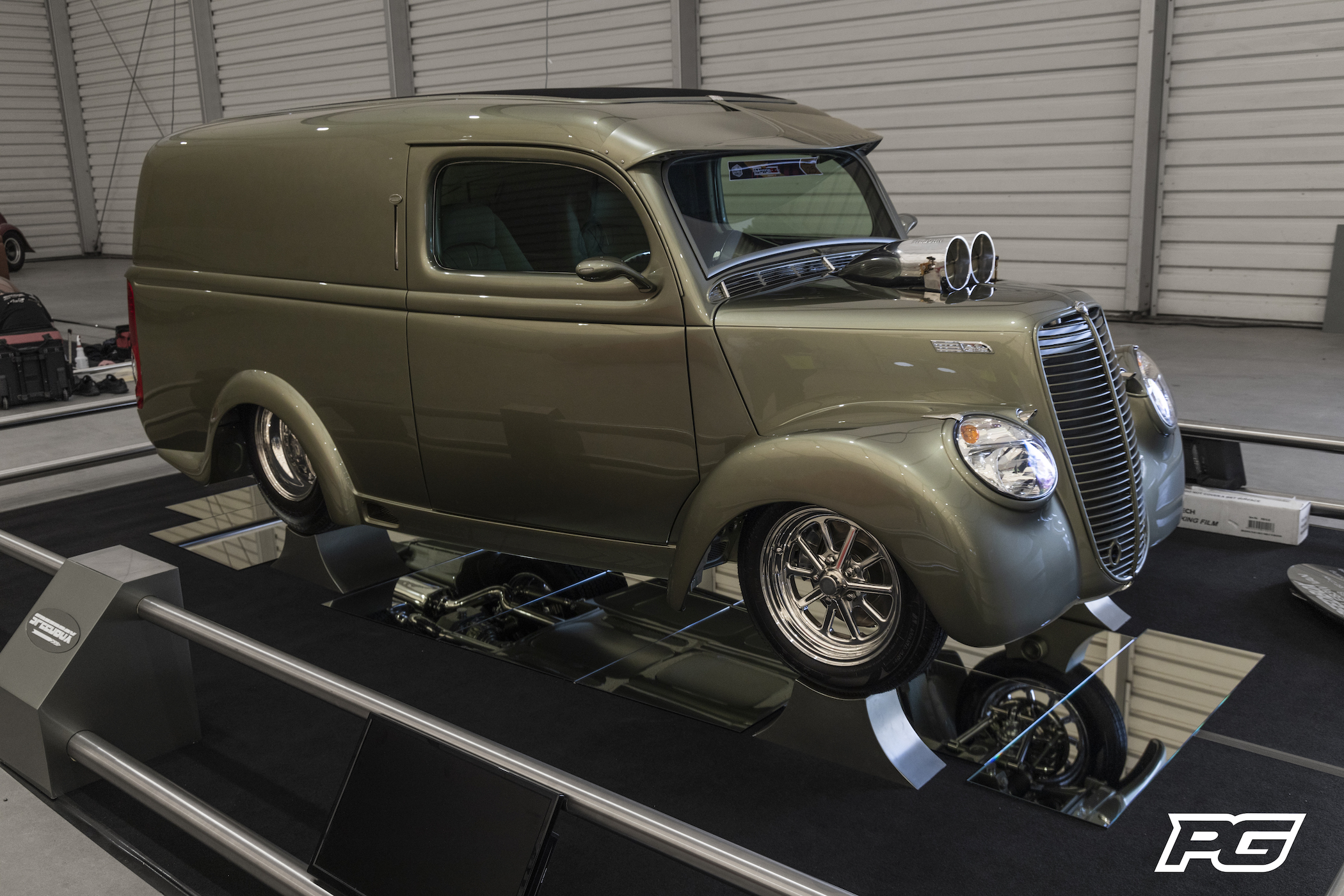
The Australian automotive scene has witnessed an extraordinary phenomenon in the past decade—a substantial surge in the popularity of restomod builds. From the years 2010 to 2020, there has been a remarkable rise in the number of captivating transformations that have injected fresh vitality into classic vehicles. Restomods have emerged as a distinct and influential trend, seamlessly blending the timeless aesthetics of vintage cars with the exhilarating performance and cutting-edge technology of the modern era. In this article, we will delve into the specific years of this growing trend and explore the factors that have contributed to its immense allure among Australian car enthusiasts.
During the early 2010s, the restomod movement began to gain significant traction in Australia. Automotive enthusiasts, driven by a passion for both the elegance of classic cars and the advancements of contemporary engineering, sought to merge the best of both worlds. From 2010 to 2015, the number of restomod builds steadily increased as more enthusiasts embarked on ambitious projects to transform their beloved vintage vehicles. These restomods represented a fusion of craftsmanship, innovation, and personal expression, captivating the attention of car enthusiasts across the country.
Owen Webb - 1969 Chevrolet Camaro
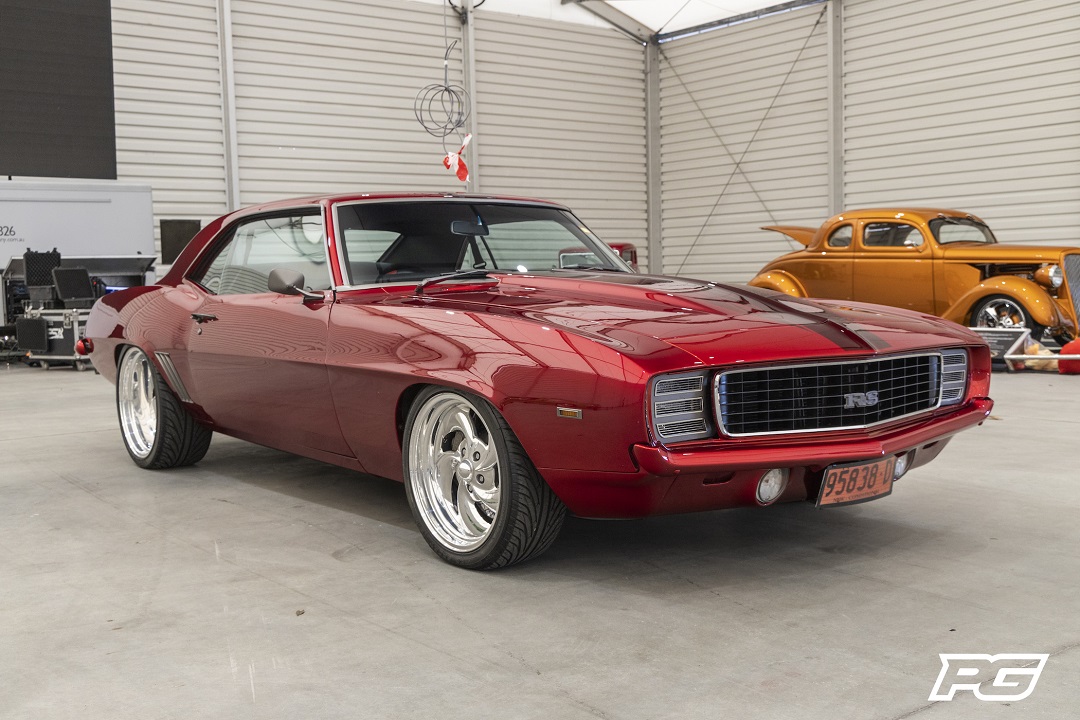
The years 2015 to 2020 witnessed an exponential growth in the popularity of restomods in Australia. The restomodding trend transcended niche circles and became more mainstream, with a surge in interest from both seasoned car enthusiasts and newcomers to the scene. This period saw an influx of 'restomodded' vehicles hitting the roads and gracing car shows, capturing the imagination of onlookers and igniting a renewed appreciation for classic cars with a modern twist. The appeal of restomods during this time lay in their ability to evoke nostalgia while delivering enhanced performance, reliability, and comfort.
One of the key driving forces behind the rise of restomods in Australia was the advancements in automotive technology and engineering during these specific years. From 2010 to 2020, rapid strides were made in areas such as engine performance, electronic systems, suspension technology, and material advancements. These innovations provided restomod builders with a wide range of options and possibilities to elevate the performance and overall driving experience of vintage vehicles. The availability of more efficient engines, advanced fuel injection systems, improved handling components, and modern comforts allowed for the seamless integration of modern technology into classic car platforms.
Furthermore, the growing interest in restomods can be attributed to the evolving tastes and preferences of Australian car enthusiasts during this period. While there has always been a deep appreciation for classic cars in Australia, the desire for a unique and personalised driving experience became more pronounced in the specific years of 2010 to 2020. Restomods provided a way for enthusiasts to create bespoke vehicles that showcased their individual style and personality. The ability to customise classic cars with modern features, such as state-of-the-art audio systems, advanced navigation, and contemporary interiors, appealed to a generation of car enthusiasts seeking the perfect blend of nostalgia and cutting-edge technology.
Kylie Perry – 1960 FB Holden
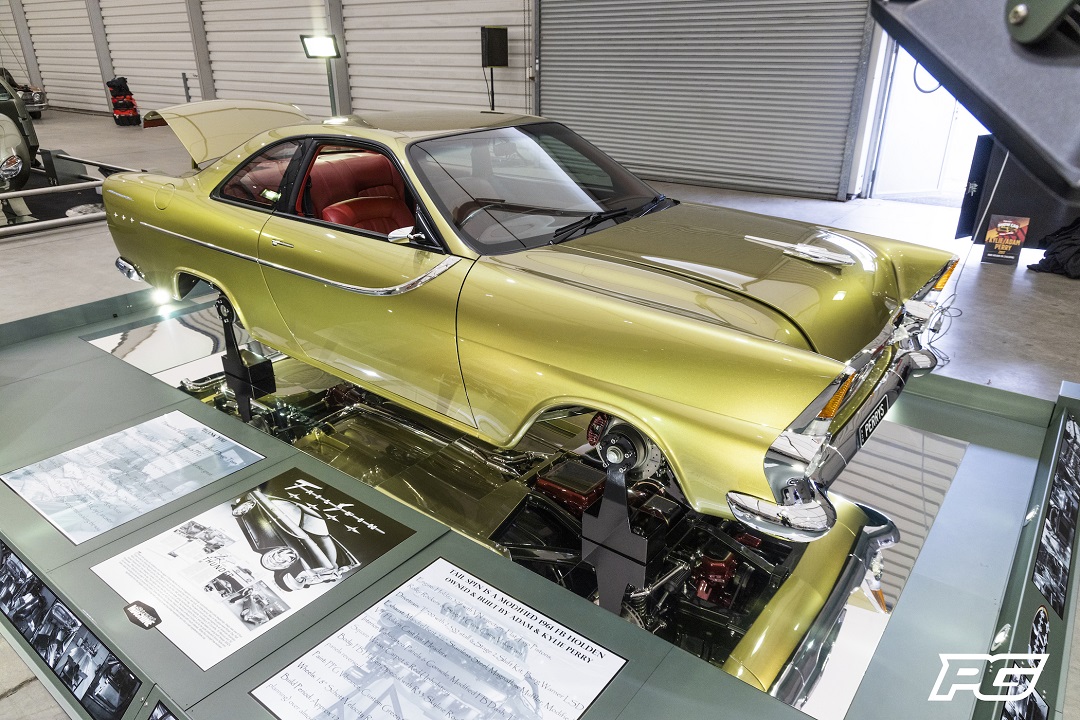
At its very core, a restomod represents a perfect amalgamation of restoration and modification. Unlike traditional classic car restorations that aim to preserve vehicles in their original factory condition, restomods take a bold and innovative approach. They retain the vintage charm and iconic design of classic cars while seamlessly integrating modern mechanical components, advanced suspension systems, state-of-the-art electronics, and high-performance engines. The end result is a harmonious fusion of classic beauty and contemporary power, a sight to behold on Australian roads.
One of the key driving forces behind the surge in restomod popularity is the insatiable desire for an enhanced driving experience. Classic cars, revered for their elegance and nostalgic appeal, often fall short in terms of performance, safety, and convenience when compared to their modern counterparts. Restomods bridge this gap, leveraging the latest advancements in automotive technology. From engine swaps and transmission upgrades to brake and suspension enhancements, every aspect is meticulously engineered to deliver a thrilling, reliable, and exhilarating driving experience.
Furthermore, restomods provide a unique opportunity for personalisation and self-expression. Enthusiasts can unleash their creativity by customising their vehicles according to their individual tastes and preferences. From bespoke interiors and modern infotainment systems to custom paint finishes and meticulously selected wheels, restomods allow owners to create a truly one-of-a-kind masterpiece that reflects their personality and automotive vision.
Moreover, the restomod movement has fostered a vibrant community of like-minded individuals who share a deep passion for blending the old with the new. Car shows, gatherings, and online forums provide platforms for restomod enthusiasts to showcase their exceptional creations, exchange knowledge, and appreciate the meticulous craftsmanship behind these automotive works of art. The camaraderie and sense of community cultivated by the restomod culture have further fuelled its popularity, inspiring even more enthusiasts to embark on their own restomod projects across Australia.
Mick Fabar – 1967 Ford XR Falcon
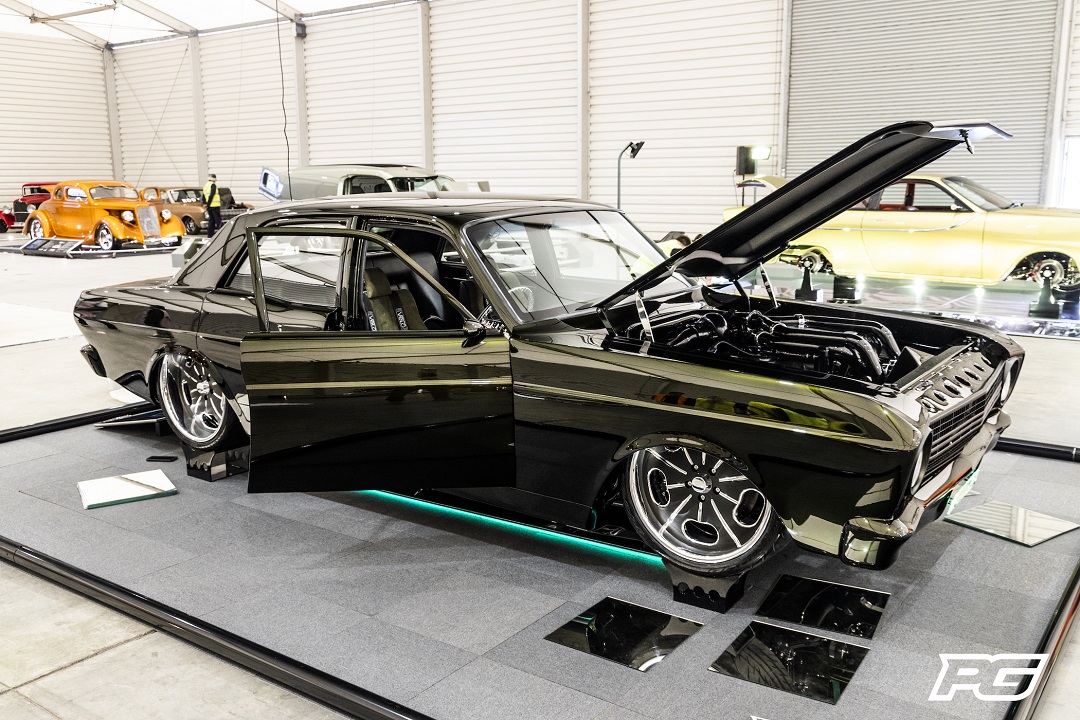
Within the Australian automotive landscape, the restomod scene has gained significant momentum, with countless classic cars undergoing transformative journeys. From iconic muscle cars like the Ford Mustang and Holden Monaro to vintage European gems such as the Porsche 911 and Jaguar E-Type, Australian car enthusiasts have wholeheartedly embraced the restomod ethos, breathing new life into these automotive legends.
Restomods know no bounds when it comes to specific car makes or models. The versatility of the concept allows for boundless creativity and innovation across various vehicle segments. Whether it's a vintage pickup truck converted to an electric drivetrain or a classic sports car upgraded with modern suspension components, restomods exemplify the limitless possibilities of blending classic style with contemporary technology.
As the popularity of restomods continues to soar, it has also had a positive impact on the Australian automotive industry. Skilled craftsmen, mechanics, and aftermarket companies have emerged, specialising in restomod services and providing a wide array of components. This growing ecosystem of experts caters to the unique needs of restomod enthusiasts, offering them the expertise, resources, and parts required to bring their visionary creations to life.
History of Restomod
Restomods trace their roots back to the late 20th century when car enthusiasts began modifying classic vehicles to enhance their performance and drivability. The movement gained traction as enthusiasts sought to bridge the gap between vintage charm and contemporary capabilities. Restomods evolved as a response to the limitations of classic cars in terms of power, handling, and comfort, allowing owners to enjoy the best of both worlds.
Restomods arose as a response to the limitations of original classic cars. While these vehicles boasted iconic designs and held sentimental value, they often fell short in terms of performance, reliability, and comfort when compared to their modern counterparts. This led enthusiasts to seek ways to combine the allure of vintage cars with the practicality and exhilaration provided by modern engineering.
Early restomod pioneers recognised the potential to enhance classic cars through strategic modifications. These enthusiasts started experimenting with engine swaps, replacing original powerplants with more powerful and efficient engines. The objective was to unleash the true potential of these vehicles and create a driving experience that surpassed the capabilities of their original configurations.
Malcolm Apps – 1959 FC Holden
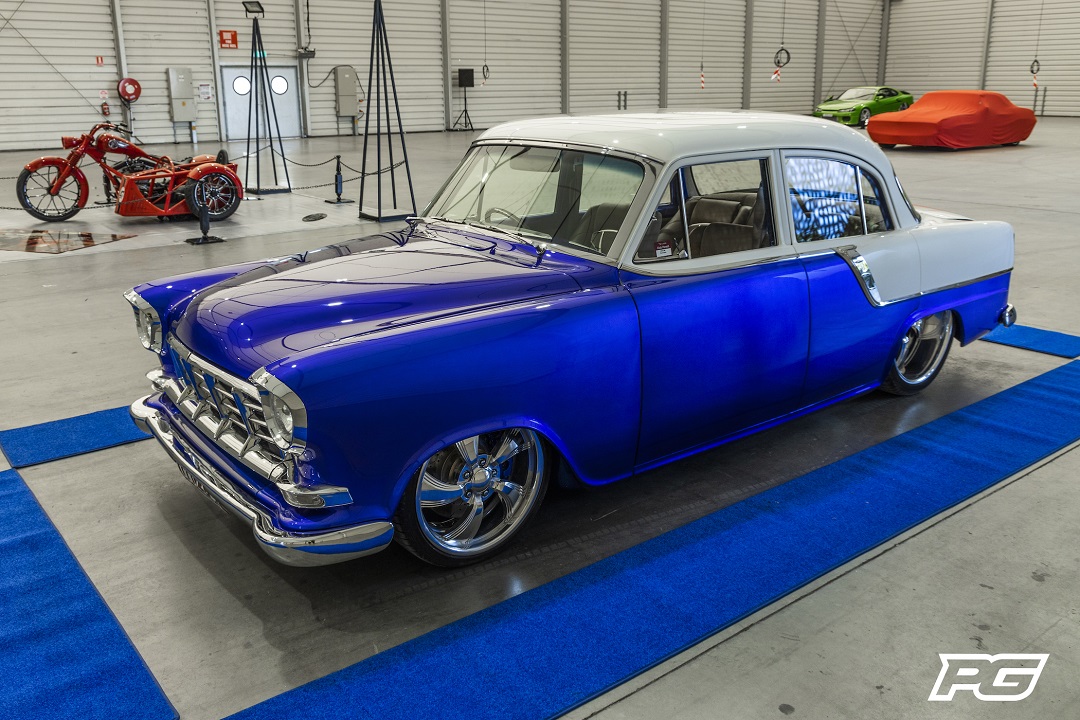
As the restomod movement gained momentum, technological advancements in automotive engineering played a significant role in shaping its evolution. The introduction of electronic fuel injection, advanced suspension systems, improved braking systems, and the integration of modern electronics allowed for greater control, performance, and reliability in 'restomodded' vehicles.
Furthermore, restomods became a platform for showcasing the cutting-edge technology and innovation of the era. Enthusiasts embraced the opportunity to incorporate state-of-the-art features and amenities into classic cars, from advanced sound systems and climate control to navigation systems and connectivity options. This fusion of vintage aesthetics with modern conveniences elevated the restomod scene and attracted a wider audience.
In the specific context of the United Kingdom, the history of restomod follows a similar trajectory. British enthusiasts, renowned for their passion for classic cars, have actively participated in the restomod movement. 'Restomodded' vehicles have graced UK car shows, auctions, and online platforms, capturing attention and commanding high values in the collector car market.
Today, the history of restomod stands as a testament to the passion and ingenuity of automotive enthusiasts who dared to reimagine the possibilities of classic cars. It exemplifies the ongoing quest to push boundaries, preserve automotive heritage, and create driving experiences that bridge the gap between the past and the present.
Restomods have become a vibrant and influential segment of the automotive world, continually inspiring new generations of enthusiasts to embark on their own restomod journeys. The history of restomod is a story of innovation, creativity, and the unwavering dedication to keeping classic cars alive in a modern context.
Value Retention of Restomods
Restomods often hold their value well due to their unique blend of classic aesthetics and modern upgrades. While traditional classic car restorations primarily focus on preserving originality, restomods cater to a wider audience by offering enhanced performance, reliability, and driving pleasure. The market for restomods has grown significantly, with discerning buyers recognising their appeal and willingness to invest in these meticulously crafted and upgraded vehicles.
Defining Restomod
Restomod is a portmanteau of "restoration" and "modification." It refers to the process of restoring a classic vehicle while incorporating modern components and technologies to improve performance, safety, and comfort. Restomods retain the classic appearance, paying homage to the vehicle's heritage, while seamlessly integrating contemporary features such as advanced engines, upgraded suspensions, modern electronics, and luxurious interiors.
In the realm of restomods, the focus is not solely on preserving the originality of a classic vehicle, but rather on enhancing its overall performance, comfort, and reliability. Restomods embrace the concept of taking something beloved from the past and infusing it with contemporary features and components to create a truly exceptional driving experience.
Brenton Dalwood – 1935 Ford Coupe
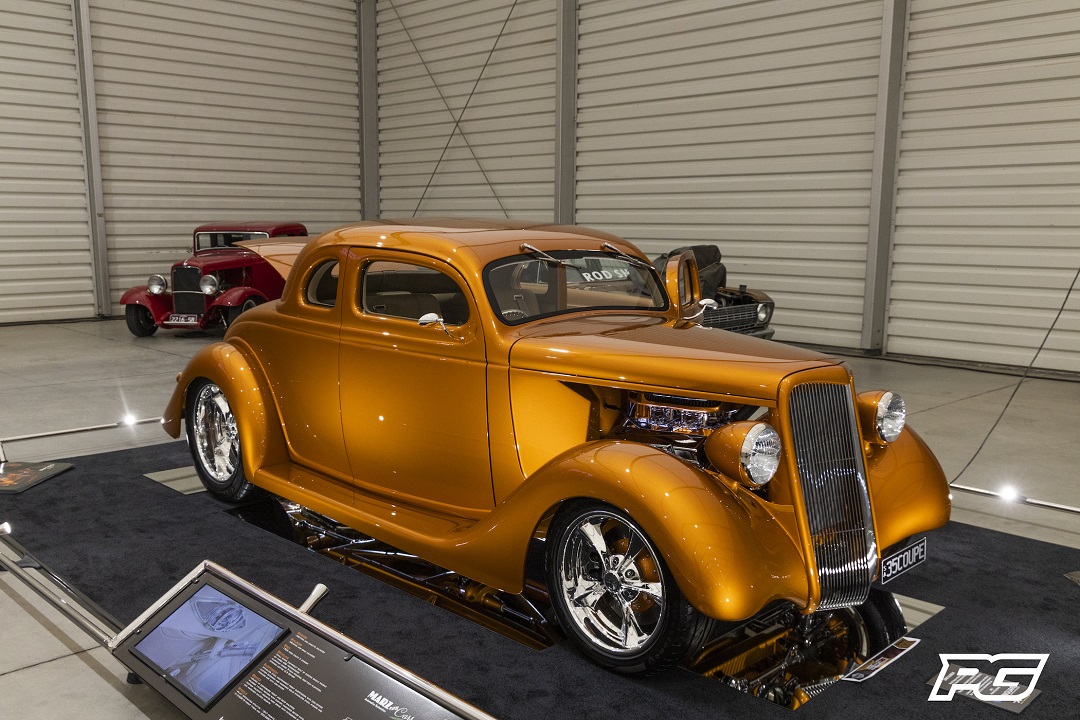
Restomod projects begin with a meticulously restored classic car, ensuring that the vehicle's foundation is solid and true to its original design. From there, the magic happens as skilled craftsmen and passionate enthusiasts embark on a journey of customisation and innovation.
Every aspect of the vehicle is scrutinised and improved upon. The engine, once constrained by the limitations of the era it was built in, is replaced or upgraded with a modern powerplant that delivers exhilarating performance, increased horsepower, and improved fuel efficiency. Suspension systems are fine-tuned to provide better handling and stability, allowing for precise control on the road. Brakes are upgraded to enhance stopping power and safety.
Moreover, restomods embrace the convenience and luxury of modern amenities. Interiors are meticulously crafted and tailored, incorporating premium materials, state-of-the-art sound systems, advanced infotainment displays, and climate control systems to ensure maximum comfort and enjoyment. The integration of cutting-edge electronics and technology allows for seamless connectivity and enhances the overall driving experience.
Chris Retzos – 1957 Chevrolet BelAir
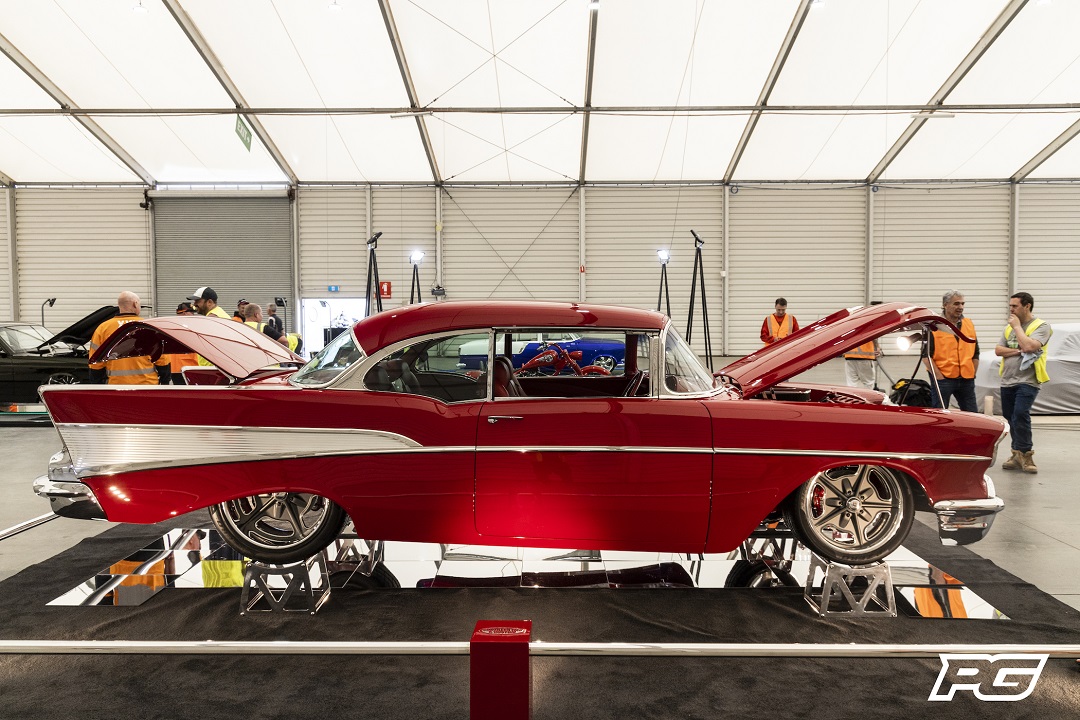
One of the defining characteristics of a restomod is its ability to strike a perfect balance between the vintage charm of the original design and the contemporary upgrades. The exterior aesthetics are carefully preserved, capturing the essence of the era while incorporating subtle modifications to enhance aerodynamics and visual appeal. From carefully selected paint finishes to custom wheels and tasteful exterior accents, every detail is thoughtfully considered to create a cohesive and captivating overall look.
Restomods have garnered a dedicated following and have become highly sought after among collectors and enthusiasts alike. These unique vehicles combine the timeless beauty of classic cars with the exhilaration of modern performance, making them stand out on the road and at car shows. The restomod movement exemplifies the passion and creativity of car enthusiasts who are committed to preserving automotive heritage while pushing the boundaries of what is possible in terms of performance and technology.
In essence, restomods represent a harmonious fusion of the old and the new, embodying the spirit of automotive innovation and craftsmanship. They offer a captivating blend of nostalgia, style, and exhilaration, ensuring that the legacy of classic cars continues to thrive in the modern era.
Pro Touring vs. Restomod
Pro Touring and Restomod are two distinct approaches to modifying classic vehicles, each with its own characteristics and objectives. While they share similarities in blending vintage aesthetics with modern performance, there are notable differences that set them apart.
Pro Touring builds focus primarily on enhancing the vehicle's performance and handling capabilities for spirited driving and track use. These builds often involve extensive upgrades to the suspension, brakes, drivetrain, and engine, aiming to achieve optimal power, agility, and cornering ability. Pro Touring vehicles are designed to deliver a thrilling driving experience, combining the classic styling of a vintage car with the performance of a modern sports car.
Restomod, on the other hand, takes a broader approach by combining the restoration of a classic vehicle with modern upgrades across various aspects. While performance enhancements are still a key component, restomods also prioritize preserving the original aesthetic and character of the vehicle. This means incorporating modern conveniences, technology, and comfort features while maintaining the vintage charm. Restomod builds often involve meticulous attention to detail, ensuring that the modifications seamlessly integrate with the car's original design.
One way to distinguish Pro Touring from Restomod is by examining the overall objective. Pro Touring builds prioritize performance above all else, with modifications tailored towards achieving exceptional speed, handling, and track prowess. Restomods, on the other hand, strive to strike a balance between modern performance and nostalgic appeal, preserving the essence of the classic vehicle while incorporating contemporary upgrades.
Additionally, the choice of components and modifications can differ between Pro Touring and Restomod builds. Pro Touring vehicles may feature high-performance suspension systems, larger wheels and tires, upgraded brakes, and powerful engines. Restomods, while still benefiting from performance upgrades, may focus more on creature comforts such as modern audio systems, air conditioning, and enhanced interior appointments.
Ultimately, whether one prefers the Pro Touring approach or the Restomod philosophy depends on personal preferences and the desired driving experience. Both styles offer unique opportunities to breathe new life into classic vehicles, allowing enthusiasts to enjoy the best of both worlds: vintage charm and modern performance.
Restomod On Performance Garage
The popularity of restomod builds in Australia continues to surge, captivating car enthusiasts across the country. These captivating transformations breathe new life into classic vehicles, blending their timeless aesthetics with modern performance and cutting-edge technology. Restomods have become a driving force in the automotive scene, with enthusiasts seeking the perfect balance between nostalgia and innovation.
In recent news, the Shannons Tamworth Motor Show showcased an impressive array of classic and modified vehicles, including some stunning restomods. From meticulously restored vintage cars to custom-built masterpieces, the show highlighted the passion and craftsmanship that goes into these unique creations.
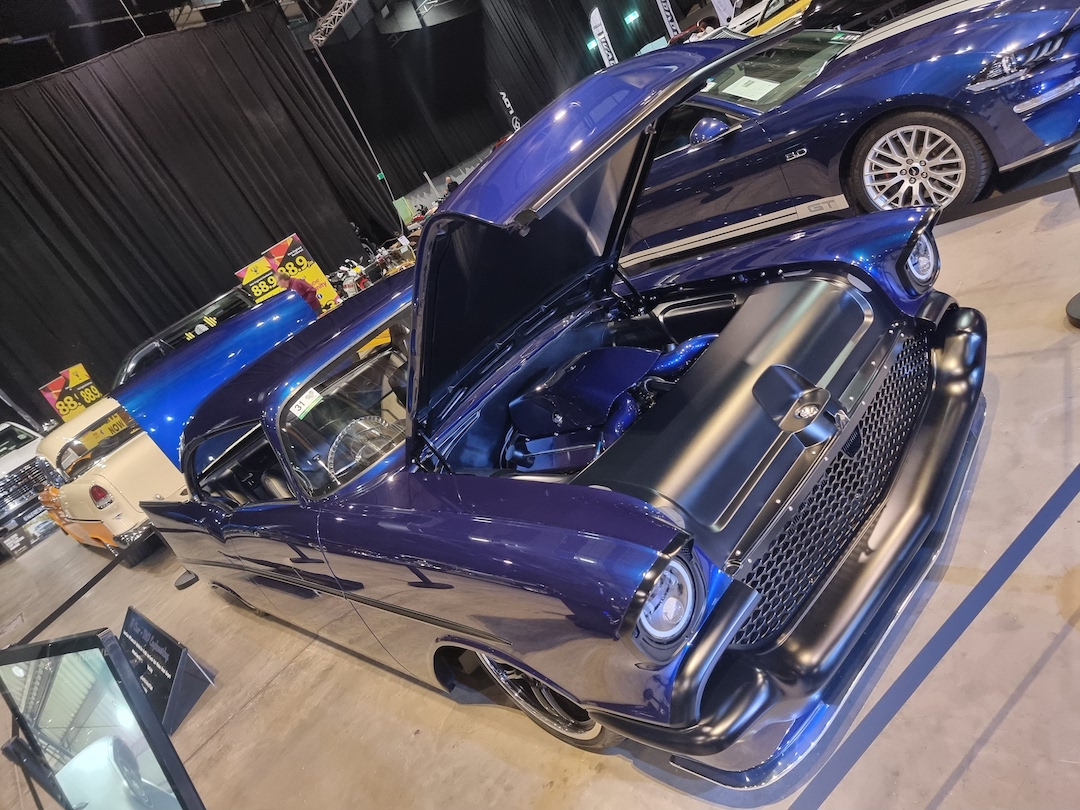
One notable restomod that has been making waves is Ray's blown LS KNGGPA VN Commodore Group A SS tribute. This incredible machine features a custom fabricated engine bay, tubbed front and rear, and a worked LS2 with an 8/71 blower. It perfectly embodies the spirit of restomodding, combining classic Commodore styling with modern performance upgrades. It's no wonder that this car has garnered attention and praise, even earning a spot on the cover of Street Machine magazine.
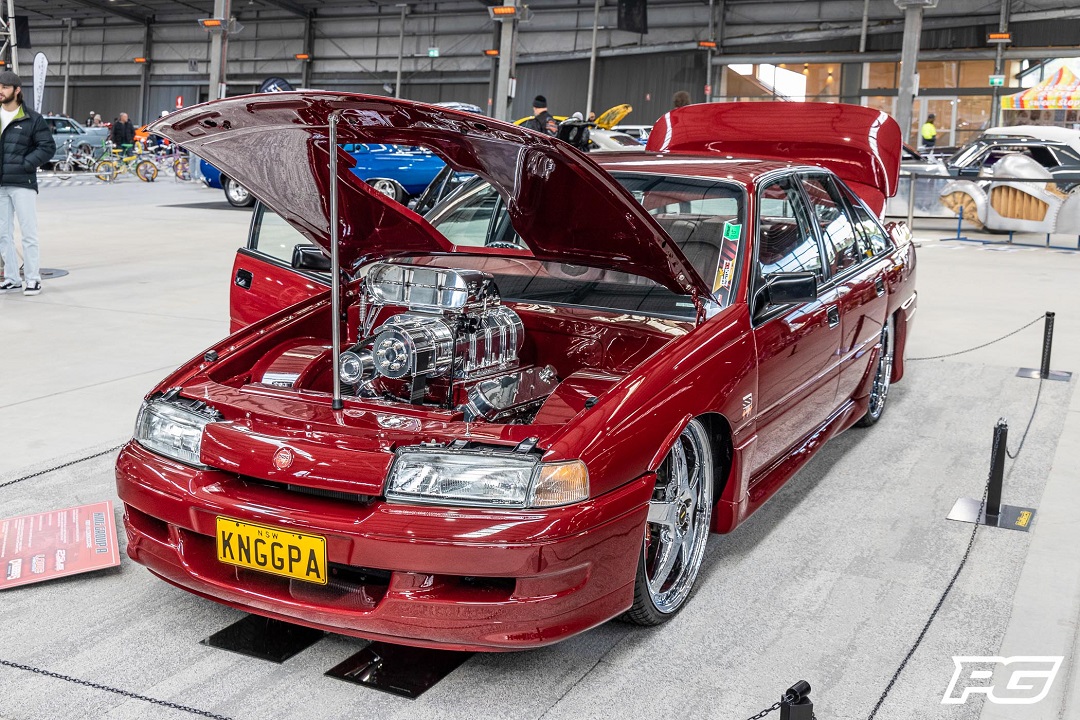
Another standout restomod featured at the recent Summernats event was Derek's blown Pinto 1968 Ford Cortina. This unique build showcases the creativity and innovation that restomods offer. With a powerful engine, custom modifications, and eye-catching aesthetics, this Cortina turns heads wherever it goes. It serves as a testament to the endless possibilities of restomodding, where car enthusiasts can express their individuality and push the boundaries of automotive design.
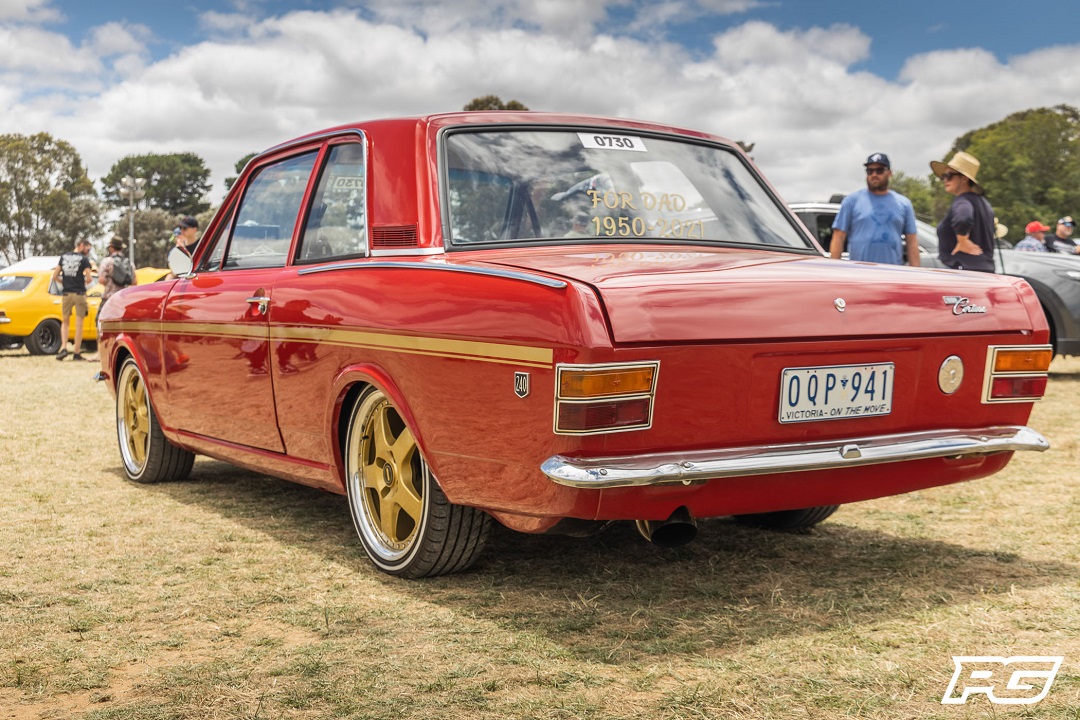
Another achievement is the triumph of the 1971 Ford XY Fairmont named "Forged" at the prestigious Meguiar's MotorEx '21, where it claimed the Grand Master title. This remarkable vehicle, featured in a recent news post on Performance Garage, perfectly embodies the essence of a restomod with its harmonious blend of classic design and contemporary performance enhancements.
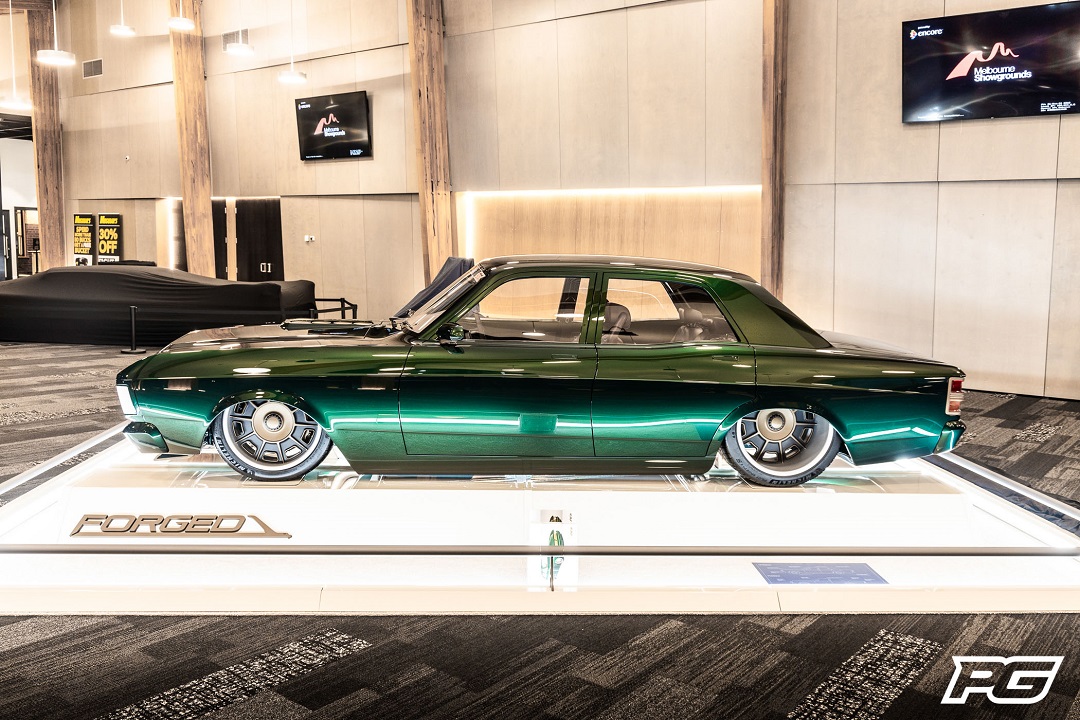
Another exciting development is the inclusion of Fitzys' iconic "Trilogy" into the esteemed MotorEx Show Car Hall of Fame. This FC wagon, currently undergoing an exceptional transformation, is poised to become an unforgettable restomod masterpiece. Fitzys' dedication and craftsmanship shine through in every detail, as highlighted in a captivating video featured on Performance Garage.
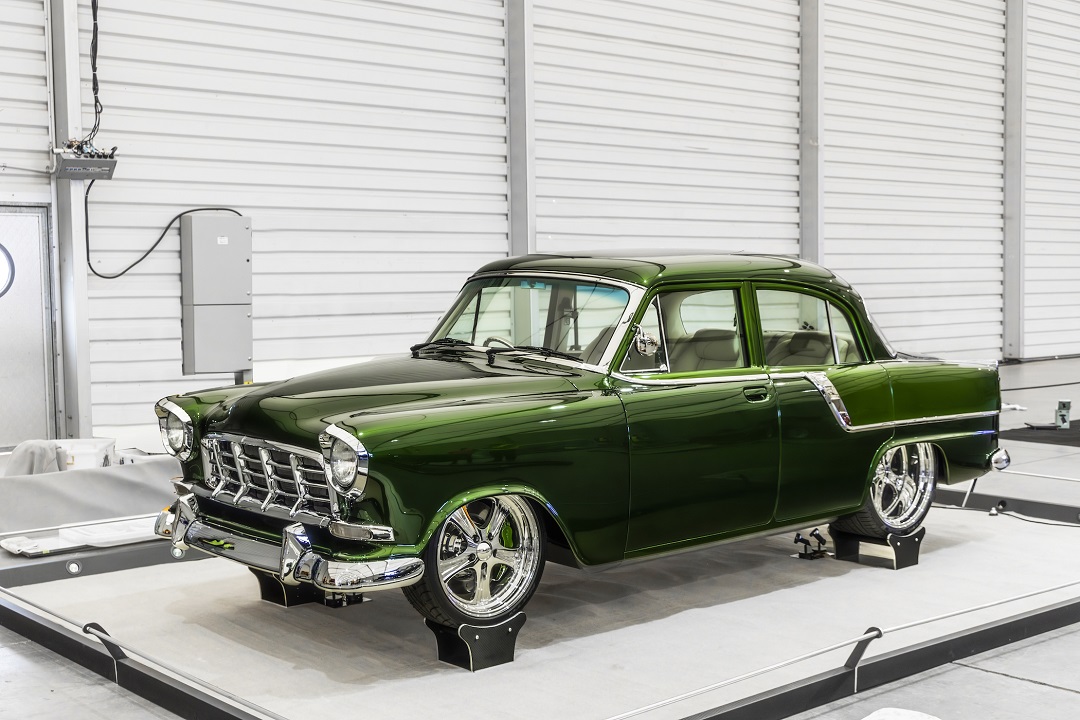
Les Lawry's remarkable 1930 Ford Vicky is yet another vehicle that exemplifies the restomod movement. This stunning creation, set to be showcased in the MotorEx Hall of Fame, showcases the meticulous attention to detail and the fusion of vintage aesthetics with modern enhancements. Performance Garage provides a fascinating glimpse into this extraordinary vehicle, capturing the essence of its restomod journey in their news post: Les Lawry's 1930 Ford Vicky Ready for MotorEx Hall of Fame.
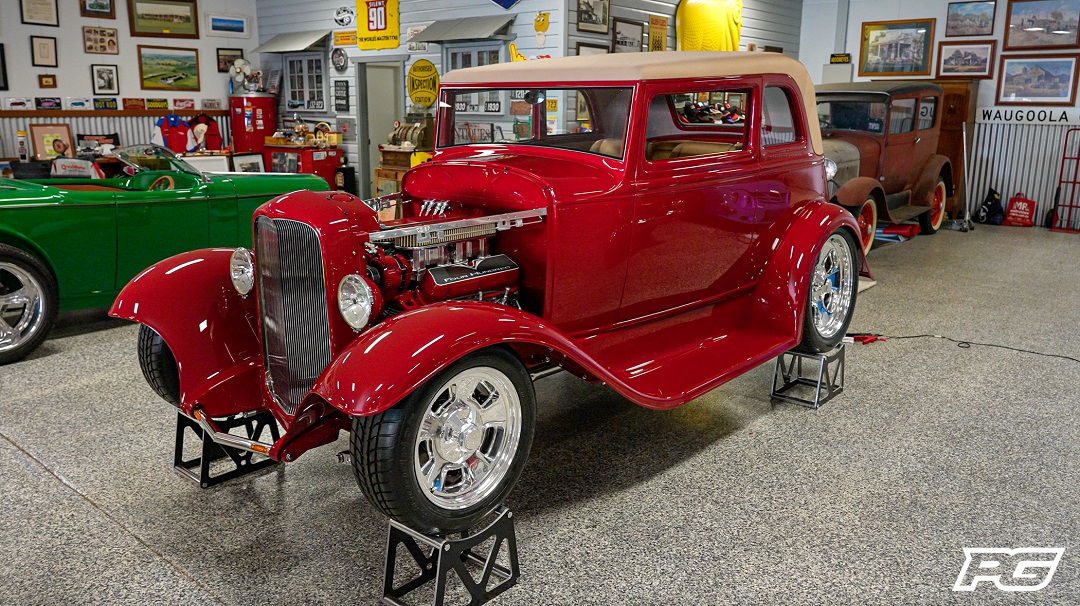
The combination of classic charm and modern performance in restomod builds has captivated the hearts of Australian car enthusiasts. Whether it's a meticulously restored vintage vehicle or a custom-built masterpiece, restomods offer a unique and thrilling driving experience. With each project pushing the boundaries of automotive design, the restomod movement continues to evolve and inspire car enthusiasts to create their own one-of-a-kind machines.
Comments
No posts found










